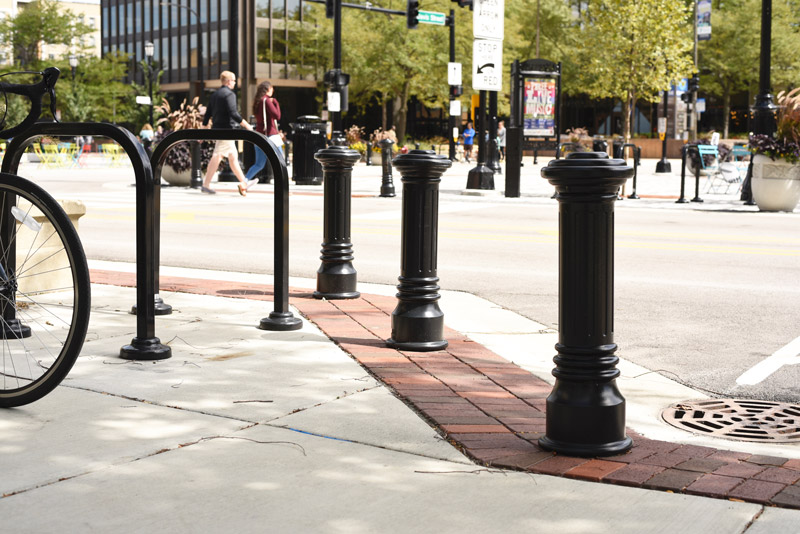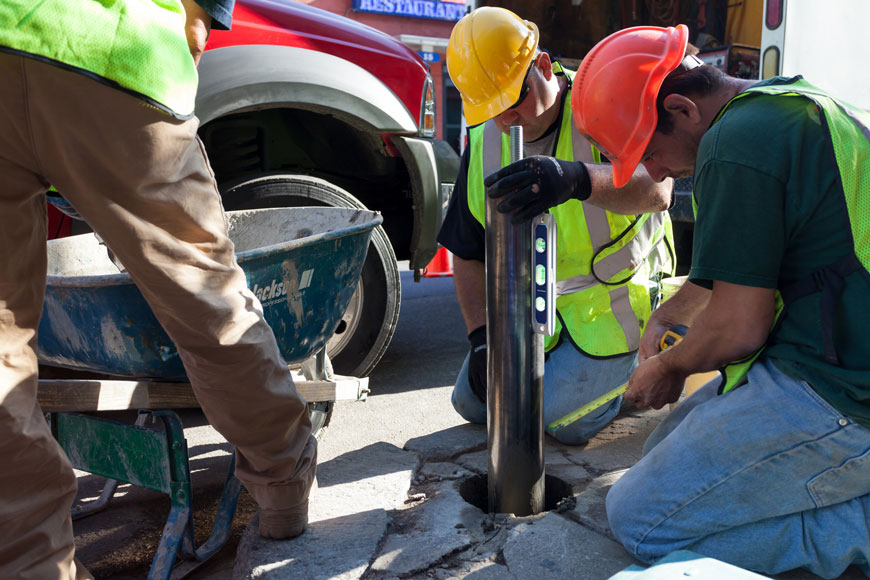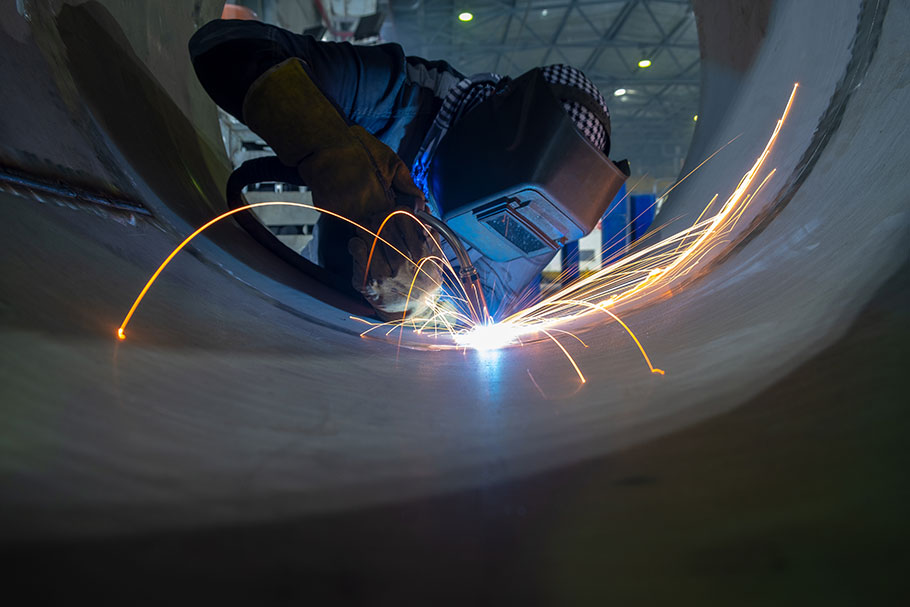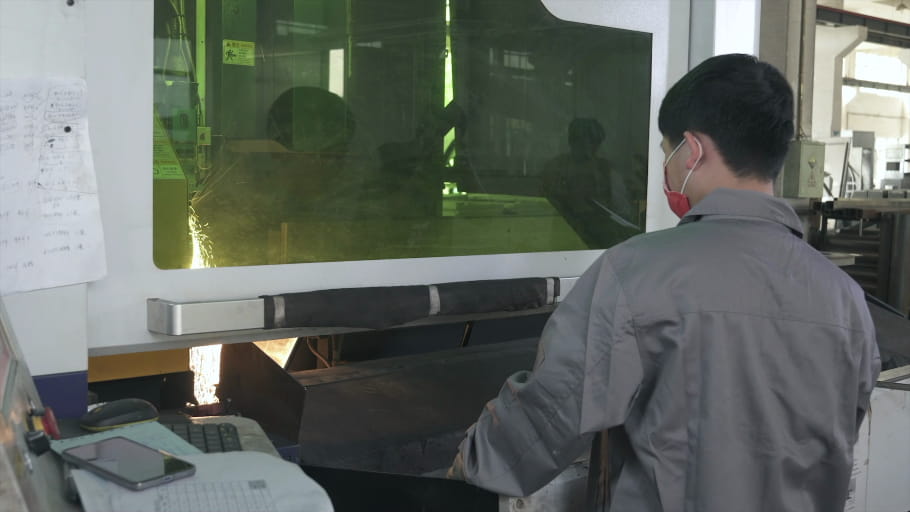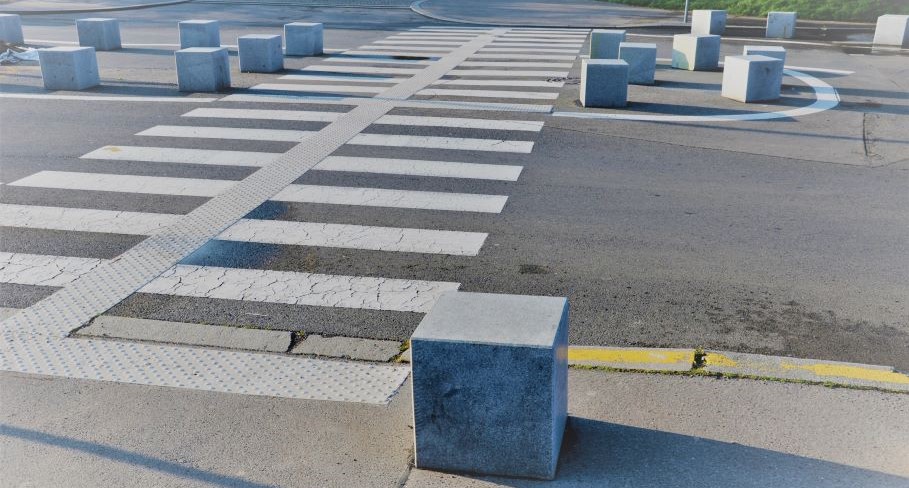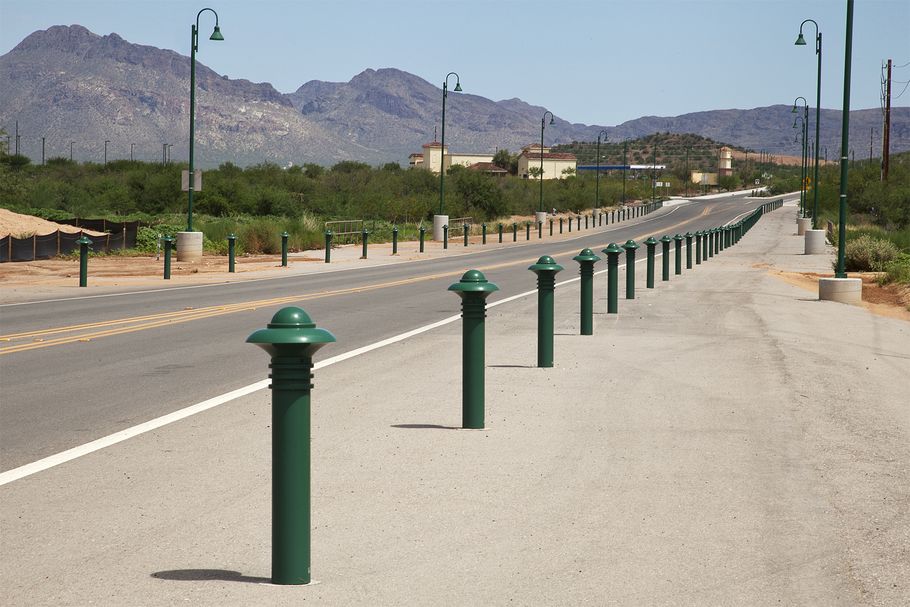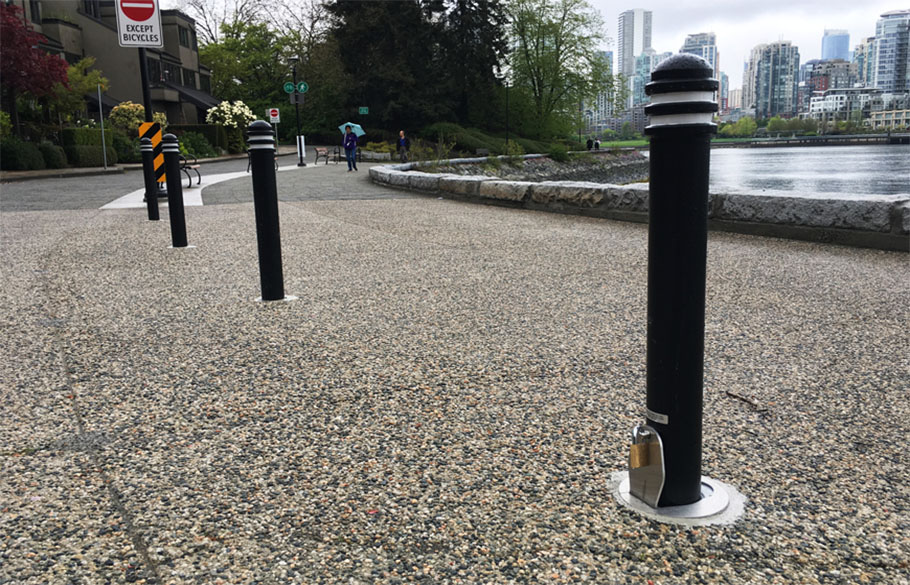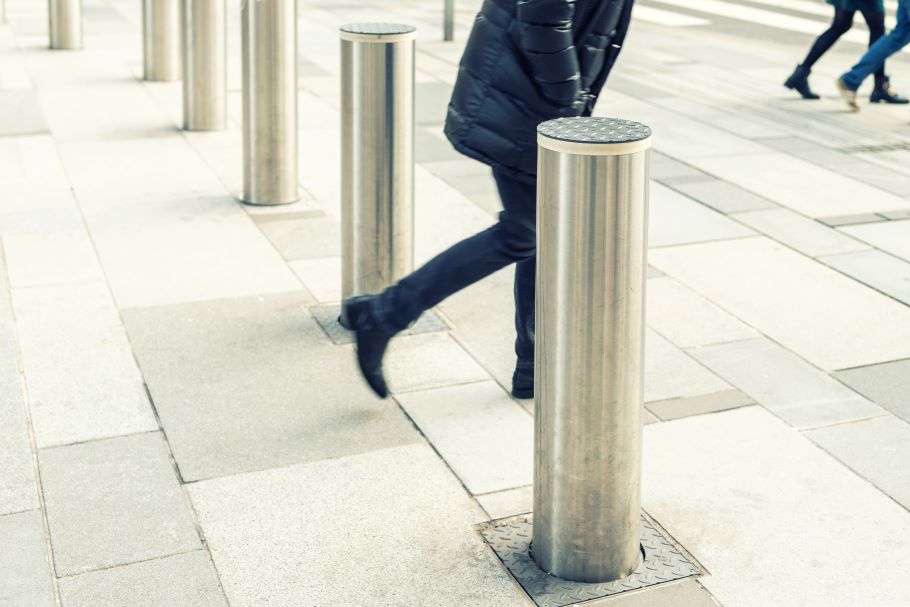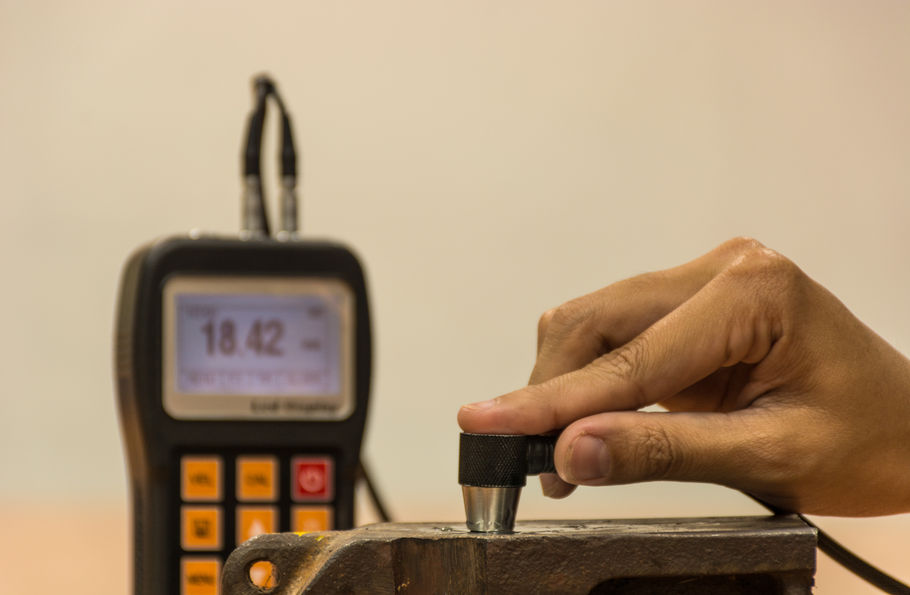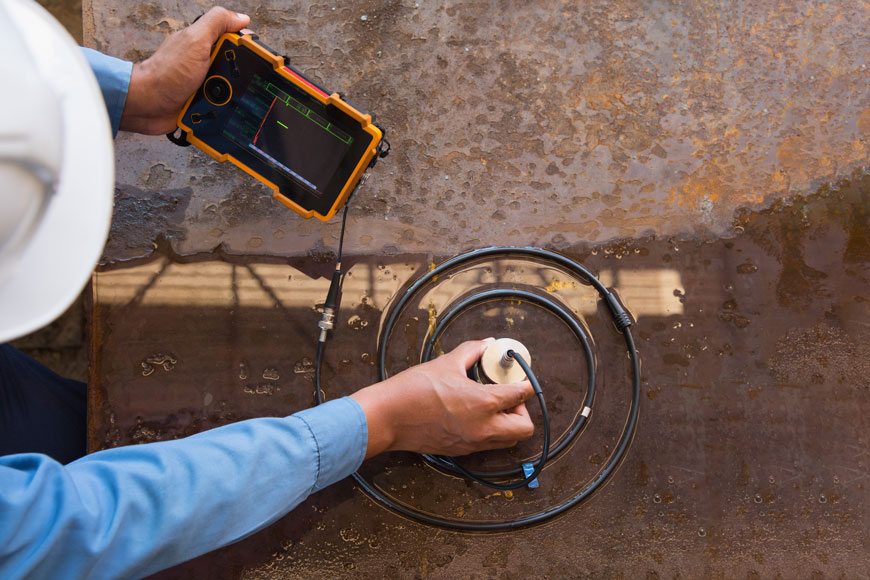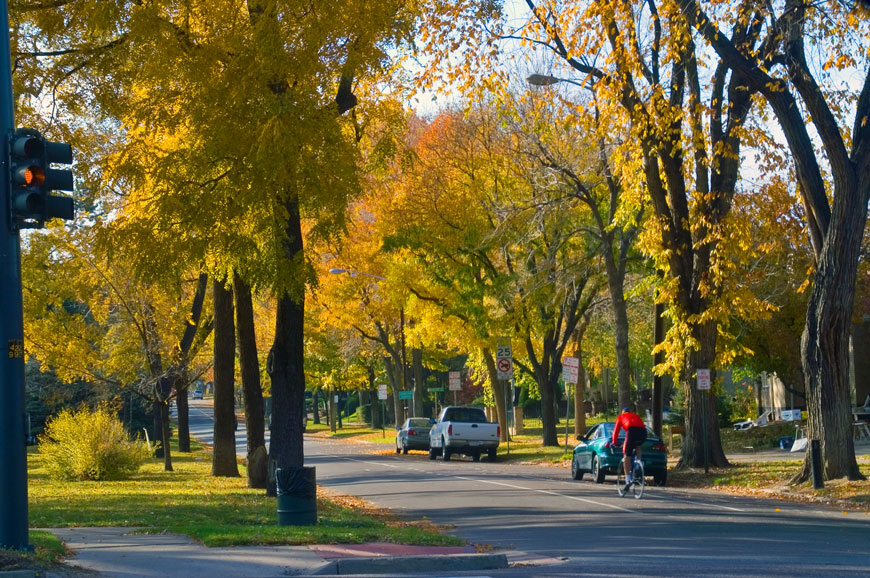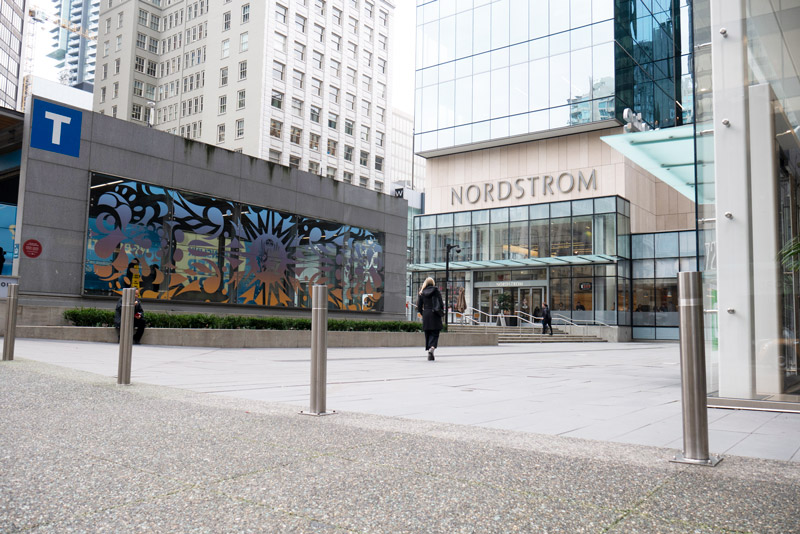How to seamlessly place bollards on stone or brick
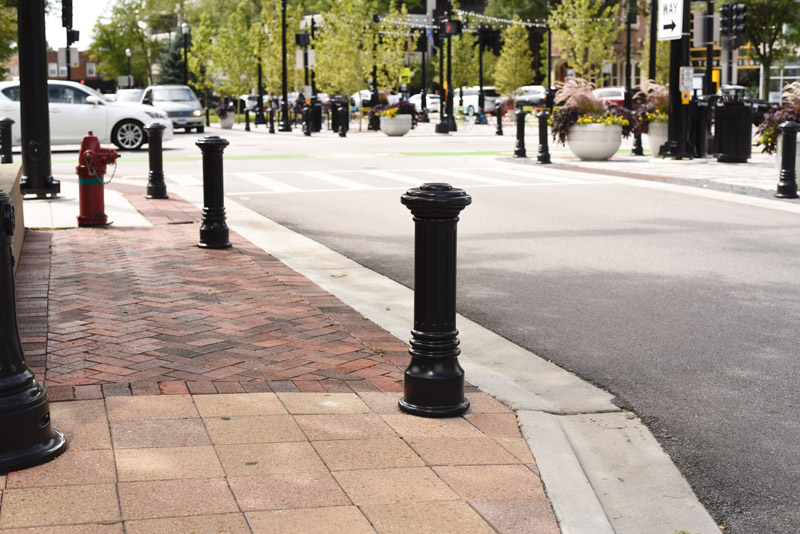
A few simple steps help put bollards on landscape pavers. Check out our how-tos for:
It’s common for decorative bollards to be installed with stone or concrete pavers for a fully finished site look. The fine finish of cast iron or stainless steel is a natural complement to the beauty of stone. Iron and stainless—like stone—are durable, low maintenance outdoor materials.
Unlike with smaller fixtures, bollards are not usually installed into the pavers themselves. We recommend pulling the pavers to complete concrete installation below, and then settling pavers on top for a finished look.
Flanged, removable, retractable, and deep-set impact-protective bollards can be installed with pavers.
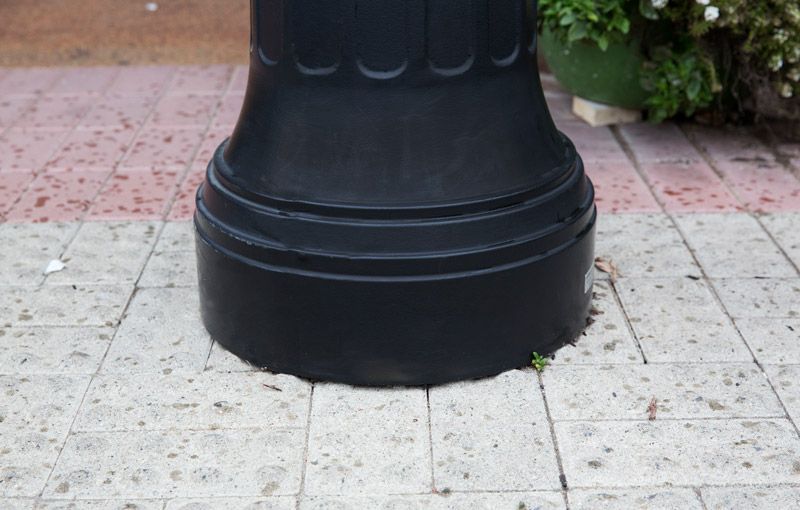
Impact-protective bollard installation into pavers
In order to provide impact protection, security (steel-pipe) bollards and crash-rated bollards must have one end dug into the ground. The excavation must be lower than the frost line to prevent heaving.
These bollards are made of steel and then are both filled and surrounded by concrete in order to provide crash protection.
In order to install pavers and impact-protective bollards, the level of concrete is set by the height of the paver. The loss of the thin level of paver material to the volume of the concrete surround will only minimally affect the stopping power of the bollard. However, crash-rated bollards can be dug a few inches lower, by the overall height of the paver, to remove any doubt.
For a seamless look, a cover or sleeve is almost always used over the top of crash-rated and security bollards. Impact-resistant cores can be trimmed to fit shorter covers. Bollard covers with a larger diameter base than the security posts can help hide paver cuts. This offers a smooth look as though the cover is simply resting on top of the pavers.
- Place pavers around the pipe and cut if necessary, to minimize gaps. No gap should extend beyond the decorative cover’s base diameter.
- Fill with either sand or grout.
- Slide a decorative bollard over top, hiding the cuts.
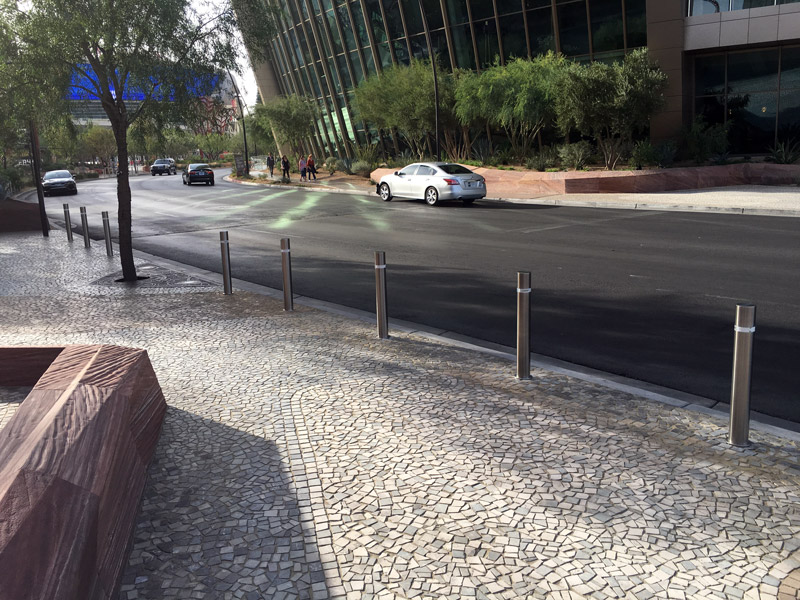
Pavers and retractable or removable in-ground receivers
Retractable or removable in-ground receivers also can be installed into pavers. Again, pavers will be removed, and the receiver will be cemented into the substrate just as it might be into concrete. However, as with impact-protective bollards, the concrete depth will be lowered by the height of the pavers.
Receivers usually have a slight collar to them. Paver edges slip under this edge. Give the lip or collar a gentle cemented berm to make the edge less prominent.
Installation documents for receivers specify what to do if the height of the bollard is above the frost line. Pavers may make this more likely. A shorter concrete depth makes it less likely for the receiver to be deep enough. Install as instructed, using a drain-rock layer and copper drain tubing if:
- Frost-line depth > receiver-height – paver-height
Pavers help support an installed receiver’s stability. Sand or grout holds the exposed parts of the receiver in the same way it holds the paver stones.
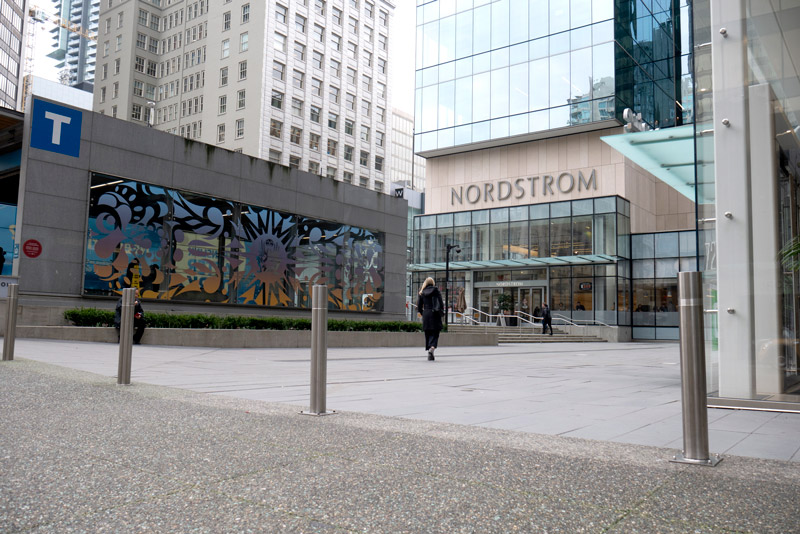
Flanged, bolt-down bollards and paver installation
Some types of site furnishings like lights or pool accessories bolt into pavers. They offer installation videos that show anchoring into or through a paver.
This type of installation is not recommended for bollards. Bolt-down bollards should only go into concrete. A bollard’s height and weight would challenge the paver’s stability, like a tree with overly shallow roots. Upon impact, the bollard may pull the paver(s) up, rather than behaving as intended.
As with previous installs, bolt-down bollards need a concrete base. This should be anchored in the substrate.
The installation then proceeds using a round concrete-forming tube, like those available from Sonotube or Quikcrete. Filled, this forms the base for the bolted bollard.
- Find a forming tube a couple of inches wider than the flange so that the bolts are secure.
- Dig below the frost line and set the tube so the top is at grade.
- Fill and let cure.
- Cut and lay pavers to fit snugly and neatly around the circular tube.
- When the concrete is cured, place bollard on top and mark bolt holes.
- Remove bollard. Drill holes with bit mentioned in installation documents for that model.
- Add concrete anchors to hold bolts.
- Bolt bollard in place.
Obviously, in secure bolt-down bollard installations, there is often some exposed concrete.
If bolting is preferable but exposed concrete is not, there are other options. Some models of bollard secure inside rather than outside the bollard using anchor castings, concrete inserts, or adhesive inserts.
Anchor castings, concrete inserts, or adhesive anchor
A concrete forming tube (i.e. Sonotube) can have an anchor casting embedded at the time of pour. These anchor castings allow some models of bollards to be affixed using a threaded rod that runs through the center of the bollard.
The concrete forming tube can be set to grade-height (as in the video above). It can also be set below the height of the pavers and affixed with a longer threaded rod.
An installer may also drill into set concrete. Either a concrete insert or an adhesive anchor can secure the bollard’s threaded rod.
A concrete border and clear color change
A strip of concrete can offer a striking visual border that adds to the placemaking function of bollards. The color change can create a clear boundary between one place and the next, be it pedestrian space and a parking lot, or a park trail and a sidewalk. (The flanged picture, above, shows an example.)
A natural pairing
Stone or brick pavers and cast-iron decorative bollards can offer a truly classical look. Together, they bring to mind old-world cobblestone streets with distinctive iron fittings. This is historically accurate: many of the first inland bollards were installed to protect stonework.
Modern bollards pair well with modern pavers. Sleek silver-toned stainless steel or simple geometrical bollard forms look elegant with clean paver looks.
A variety of color options and customizable caps allow a designer to personalize a site for distinctive style. Get in touch with our sales staff if you have any further questions about installing bollards into pavers!
